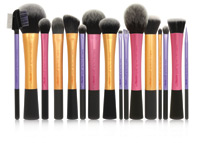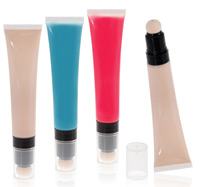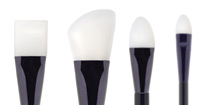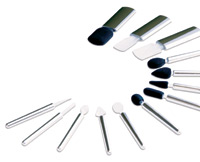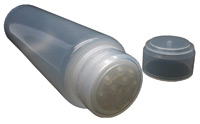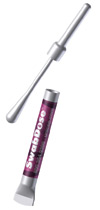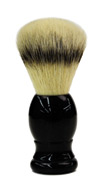
2014-07-21 13:33:12
Applicators Take Center Stage
2014-07-21 13:33:12
We’ve been seeing the rise in popularity of makeup tutorials on YouTube for quite a while, and vloggers like Michelle Phan have become celebrities. Many of YouTube’s beauty stars have more followers on social media than the largest cosmetic brands. A few have even started their own cosmetic brands.
|
|
The right types of cosmetic brushes and applicators are essential beauty tools that are required to create the looks being featured in these how-to videos. The vloggers are inspiring consumers to purchase items like pro-makeup brush sets, in an effort to recreate the looks at home, following along with the videos.
“Due to the makeup tutorials widely available on YouTube and the blogosphere, consumers are more educated in application techniques. Using the right brushes will help achieve the different looks for different occasions. Gone are the days where consumers just rely on the sponge applicators provided in the palette,” says Cindy Lim, VP, global cosmetic brush division at HCT Packaging.
While consumers may be inspired to purchase separate stand-alone applicator tools, the applicators that are packaged inside compacts are being improved as well. “More and more, applicators are becoming a key piece of the packaging design, rather than an accessory. They are also being incorporated into the package itself more often, as a part of it,” says Jody Schreffler, an independent representative for International Cosmetic Suppliers USA (ICS).
The Pro-Tools Promoted On YouTube
|
|
One famous YouTube duo from the UK, sisters Sam and Nic Chapman, have recently launched their own brush line at Ulta stores, called Real Techniques. Soon after its launch, the collection quickly became the top-selling brush line in the UK, according to the brand.
The brushes are made with soft bristles, and an extended aluminum ferrule. The handles are colorful, but also provide functional benefits. The larger face brushes are designed to stand upright on their flat base. They are also color-coded, to help users apply makeup. Orange is for base makeup, such as foundation and concealers, purple is for eye color, and pink is for finishing powders.
“I love using Real Techniques brushes because they combine premium materials with innovative design. In 2014, we introduced more brushes into the line that will make creating a pixel-perfect look easier than ever,” says Sam Chapman.
The brand’s most recent additions to the collection are travel-friendly brushes with retractable handles; and brushes with silicone liner tips, designed for liquid or gel eyeliner.
The duo’s YouTube channel is called PixiWoo, which is also the name of their makeup line. The channel’s number of views was recently tallied at 196 million.
BareMinerals’ Buffer, for Liquid Foundation
BareMinerals by Bare Escentuals recently launched its first liquid makeup, bareSkin Pure Brightening Serum foundation, which is a tone-correcting mineral foundation and brightening serum in one. Up until now, the brand has been known for its mineral powders, which are paired with its specially designed brushes that allow the user to control the level of coverage.
|
|
Staying true to its mantra of the importance of using the right type of brush to apply makeup (Bare-Minerals was a pioneer of this philosophy, years ago), now the brand has paired its liquid foundation with a unique, specially designed applicator, called the Perfecting Face Brush. The patented design is engineered with a large, soft sponge-like applicator head, attached to a long handle. The applicator tip has a hollow space right at the top, in the middle, which the brand calls a fluid reservoir.
Not to be outdone by the teenagers on YouTube,Bare-Minerals has a video on its website explaining how to apply the makeup using the applicator. It calls the technique “shake, drop, buff.” The user shakes the foundation bottle, and then squeezes a couple of drops of makeup onto the brush’s reservoir. Next, users are instructed to apply the makeup by buffing in a circular motion.
In the video, consumers immediately see the applicator’s benefits—a streak-free, perfectly blended look—while using only a couple of drops of foundation.
Designs Driven By Performance
|
|
Suppliers know that more brands are interested in developing applicator options that will provide consumers with a functional benefit—and they’re delivering.
“Innovative applicators are key. The consumer wants to go into a store and feel like they’re buying something new and fun. Although there might not be anything particularly innovative about a company’s lipgloss formula, if you can change the way it’s applied, it’s a whole new ball game,” says Mallory Wood,
|
|
sales representative, Libo Cosmetics.
Libo has a new collection of lip applicators that are designed to enhance the user’s experience with their makeup, according to Wood.
Albéa agrees that consumers are being inspired by videos to purchase better applicators, but says the trend is being fueled by more than just vloggers on YouTube.
|
|
“Consumers want products that perform up to their expectations and, yes, those expectations continue to rise, thanks to information gained via social media. But it’s more than that—certain mega trends, such as convenience and ‘nomadism,’ are driving the demand for new types of applicators. And new makeup formulations drive the development of novel applicator designs,” says Christine Gichuki, marketing communications manager, Albéa Group.
Albéa recently created the Neopro Series, to help consumers apply lipgloss as precisely as a pro. The applicator shapes include Tulip, Up & Down, and Lux Color, and each provides a tactile sensation as well.
The supplier also developed the Artist Bubble tube, which is a small, travel-friendly tube with a sponge applicator attached to the tip. It is ideal for applying concealer, cream eye shadow, cream blush or gloss.“This design addresses the nomadism trend,” says Gichuki.
Cosmopak also has a few new applicator options, and the supplier’s president, Walter Dwyer, agrees there is a need for applicators that deliver a better application and performance. “Applicators are being driven by performance now, and the right type has the ability to change or enhance the benefits of a product’s formulation,” he says.
Cosmopak has developed a new packaging option for foundation, which is an airless bottle that has a uniquely shaped sponge applicator attached to the cap.
Since the texture of a sponge affects its performance, The Penthouse Group recently developed a sponge with a smooth, silky texture. “Our new urethane skins are able to pick up a large amount of product, for a smooth high-coverage application,” says Steven Ostrower, president, The Penthouse Group.
A barrier layer on this sponge gives it its unique feel, while also preventing it from becoming saturated with product, so there is less waste.
Another supplier recognizing the need for new applicator designs that offer better functionality is Taiki-USA. “Consumers are much more educated in the proper application process. Social media has helped consumers understand how to achieve desired results,” says Stacey Calhoun, director of marketing, TaikiUSA.
Taiki has recently improved its traditional sponge applicator, which is made from NBR, by developing a process that utilizes a new manufacturing technology to create a greater consistency and smaller pore sizes. The benefit is a smoother application.
Another one of the supplier’s innovations is Flex Appli. “Traditional applicators are flat and rigid, but our flexible design bends for a smoother, more concise application,” says Calhoun. It is ideal for both skincare and color cosmetics. The applicators can be made from TPE and HZ, or just TPE.
Angled Tips for Better Application

The applicator tip called SPE—Skin Perfection Enhancer—on the beauty device created by Lombardi Design & Manufacturing and its partner Nanomed Skincare.
An applicator’s shape often affects performance, and sometimes the more narrow, pointy or chiseled the tip is, the greater control the user has to reach every contour of the face more easily.
The Penthouse Group has developed a sponge applicator like this, called the Bedge. “It has a buffed, angled edge that takes the sponge to another level, in terms of functionality,” says The Penthouse Group’s Ostrower.
Ostrower stresses that new designs for better applicators are a necessity now. “The same ol’ sponge just doesn’t impress anymore. Both brands and consumers want a more functional tool that will give them an advantage when applying makeup,” he says.
The Bedge tip is available on both large size applicators, as well as smaller ones inside compacts, which can add to a product’s perceived value. “When the consumer sees an applicator inside a compact that has a unique angled edge instead of being straight, she knows it’s a real beauty tool that will help apply the product in a new way,” he adds.
|
|
Innovative applicator shapes, designed to help apply a product, are also being promoted by Anisa International. “Brands want applicators that truly complement and even improve upon products,” explains Shana Mauk, senior director of beauty and education, Anisa International. “For example, angled brush heads can create precise, high-style looks, while curved brush heads fit the face’s natural contours for better product placement. Specific fibers can also maximize different formulas, like our Mattifying Collection, which blends synthetic and natural fibers and is perfect for pressed or loose powders,” she explains.
Anisa’s new Treatment Collection is designed to apply skin care products such as creams, serums, masks and scrubs. Some of the brushes have angled tips, to apply product more easily to certain areas of the face. Using a brush for a skin treatment product, instead of your fingers, also delivers a few application benefits. “Inspired by the tremendous growth in prestige skin care products, we created these unique silicone brushes to enhance product pickup while eliminating dirt, oil and bacteria that could contaminate or alter the formula,” explains Mauk.
Increasing Efficacy of Skincare Products
|
|
When it comes to applying skincare products, the applicator often has the ability to go beyond helping the user apply the product, by helping to dispense the product, or, in some cases, even help it to be absorbed by the skin. The right type of tip, when attached to a container such as a tube or pen, for instance, can affect a product’s efficacy, as well as the user’s experience with the product. A unique applicator tip can also be attached to beauty tool, such as an electronic device.
Lombardi Design & Manufacturing and its partner Nanomed Skincare have developed an applicator tip called SPE—Skin Perfection Enhancer. It is being used on an electronic device that has filled replaceable heads for unit-dose treatment.
SPE uses micro-sized structures that are embedded on its surface, and too small for the human eye to see, according to Jack Albanese, director of new business development at Lombardi Design & Manufacturing.
Albanese explains that these structures on the applicator tip are designed to temporarily compromise the skin’s stratum corneum, which is the outermost layer of the epidermis. The tip enhances the product’s efficacy by allowing it to be more easily absorbed by the skin.
Cosmopak is another supplier offering an applicator that can increase a skin care product’s efficacy—a rollerball tip made from ceramics. “It provides a smooth surface that picks up more product, and has a more natural look and feel as opposed to steel,” says Dwyer.
ICS offers tubes with a variety of different applicator tips, designed to complement a product’s formulation. “We have developed tubes with pumice stones, silicon scrubbers, sponges, brushes, spatulas, roller balls, and various other innovative applicators,” says Schreffler. “We’re seeing an increase in demand for packaging where the applicator is part of the pack, because it’s more convenient for the end user,” she says.
|
|
Applicators in ergonomic shapes offer an additional user-friendly feature. “Our patent pending Pyramid pot offers convenient one-handed application. The pack itself is the applicator with the formulation formed into a conical shape. Its mini size makes it a convenient, portable option for a variety of formulations. And the pyramid shape offers a nice flat surface for decoration,” Schreffler explains.
Using the right amount of a skincare product will also affect a product’s efficacy, so a unit-dose package can be helpful. Unicep’s SwabDose applicator offers this feature, plus it has a controlled dosing mechanism.
“There has been more interest in single-use applicators for convenience and precise dispensing, in order to apply a controlled amount of product,” says Karla Horton, marketing manager, Unicep. “Unit-dose packages also offer a reduced risk of cross-contamination,” she adds.
Unicep’s SwabDose is ideal for skincare products, teeth whiteners, cuticle treatments, acne spot treatments and makeup removers. It has an applicator with an outer casing tip that’s made from polypropylene, combined with tips made from various other materials, such as rayon or cotton. “Polypropylene provides a high barrier to protect the package’s contents,” explains Horton.
Cruelty-Free
Since more consumers are conscious of cruelty-free causes, suppliers are developing synthetic hairs for brushes that perform just as well—or even better—than those with animal hair.
“Cruelty-free is one of the main criteria that our customers are looking for in a brush or applicator,” says Lim of HCT Packaging. “We are always looking into new ways of manufacturing to come up with new materials that feel good and perform well—and that are good for the Earth as well. Our brushes are not only beautiful and function well, but they are responsibly made,” explains Lim.
Products for men, such as grooming tools, aren’t being forgotten. FM Brush Company is one supplier that has several new offerings for men.
The supplier’s shaving brush is made from techno-synthetic cruelty-free hair, which is anti-microbial. and mirrors the properties of badger hair. FM Brush Company has been blending its own techno-synthetics since 1987.
“These materials have come a long way in replicating the quality of animal hair, with more consistency and greater control over quality,” says Jacqueline Mink Cooper, director of retail sales, FM Brush Company.
The brush has a black acrylic handle that won’t wear like wood. “This brush is built to last,” adds Cooper.The brush comes in 11 different styles, including a retractable one, for a travel-friendly option.
please visit www.topbeautysh.com for more applications.
LinkedIn
